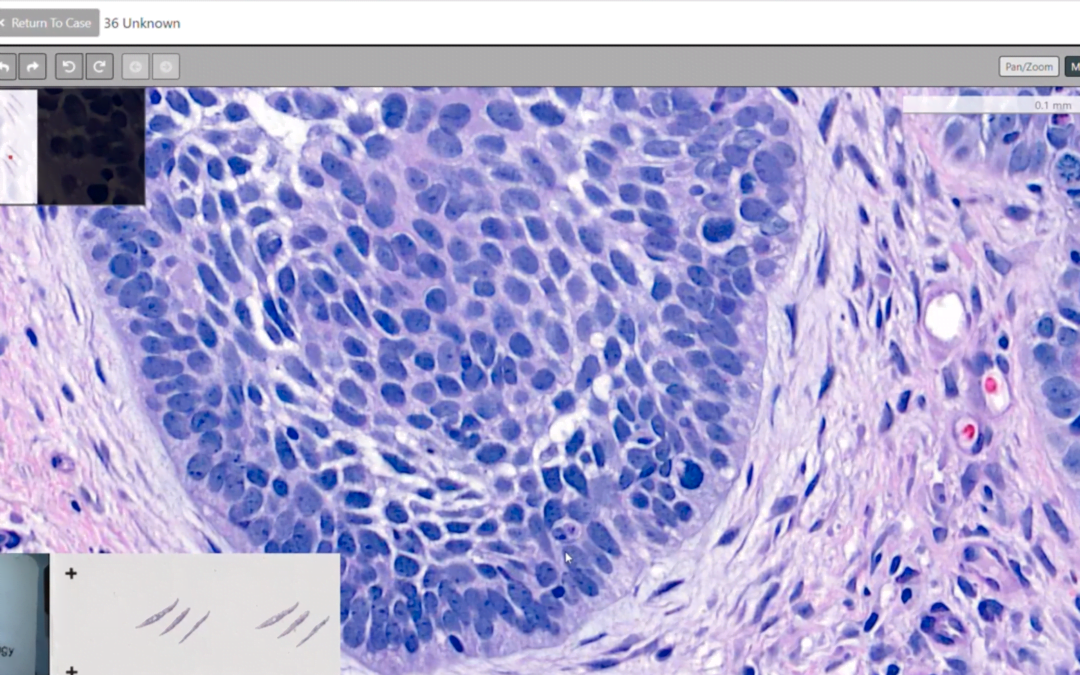Images shown are not intended to be used for the diagnosis or treatment of a disease or condition.
In this episode of Digital Dermatopathology Digest, Rajni Mandal, MD, a dermatopathologist at PathologyWatch, discusses the most common dermatological malignancy—basal cell carcinoma (BCC)—including how common it is, its warning signs, and characteristics of its various forms.
How Common Is BCC?
Prolonged exposure to UV sunlight or indoor tanning contributes to this and other forms of skin cancer, which triggers mutations in p53, PTCH (sonic hedgehog pathway), and SMO gene. Research shows that four million Americans are diagnosed with basal cell carcinoma every year. Most cases occur in people over the age of 50, and men are more likely to develop BCC than women.
What Are The Most Common Subtypes?
“There are two common types: nodular and superficial,” explains Rajni. She also points out the aggressive types of basal cell carcinoma include infiltrative, micronodular (which presents characteristics similar to those of the nodular subtype, except it’s comprised of multiple nodules), morpheaform, and basosquamous subtypes.
What Are Differences between Superficial and Nodular BCC?
Features of superficial BCC include clusters of basaloid cells descending from the epidermis with no dermal invasion.
The most common subtype, nodular basal cell carcinoma has islands of cells with peripheral palisading and a haphazard arrangement of the more central cells.
What Are the Characteristics of Morpheaform BCC?
Also known as sclerosing basal cell carcinoma, this aggressive subtype has spiky, basaloid, thin cell strands that chase down the dermis with its dense fibrous stroma. Differential diagnoses may include metastatic cancer, microcystic adnexal carcinoma, and desmoplastic trichoepithelioma.
What Are Clinical Symptoms of BCC?
Patients with basal cell carcinoma may experience:
- Sores that don’t heal
- Patches of skin that remain irritated and red
- A bump of skin that may resemble a mole but appears shiny, pink, or pearl-like in appearance
- An area where skin looks shiny and taut with poorly defined borders and a scar-like appearance
These symptoms are most likely to occur in areas often exposed to the sun, such as one’s face, neck, scalp, back, shoulders, ears, and chest. Other risk factors include Gorlin syndrome and nevus sebaceus.
Whether you’re in residency, studying for board exams, or a practicing dermatologist looking to stay sharp, the Digital Dermatopathology Digest video series is your informational and convenient source for dermatopathology review. Find the full series here.

